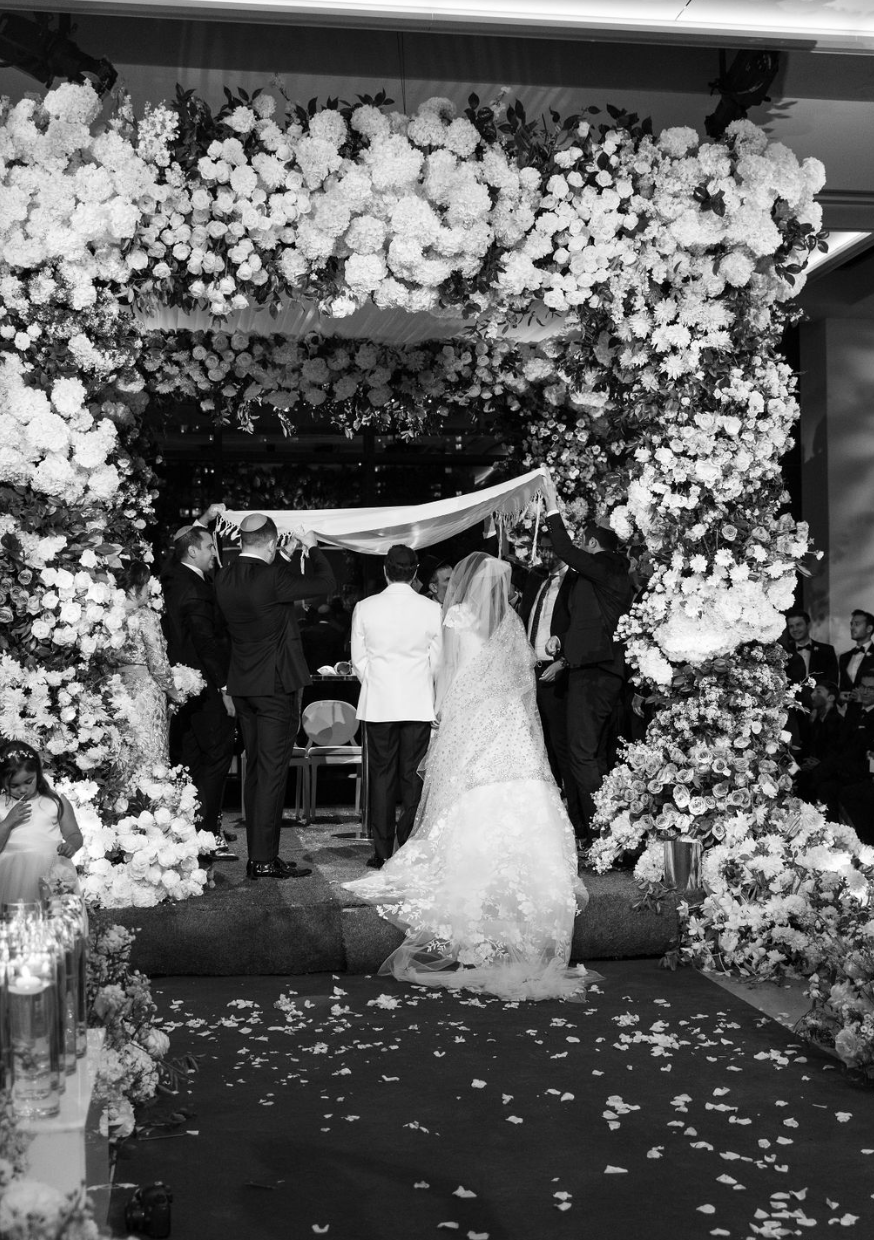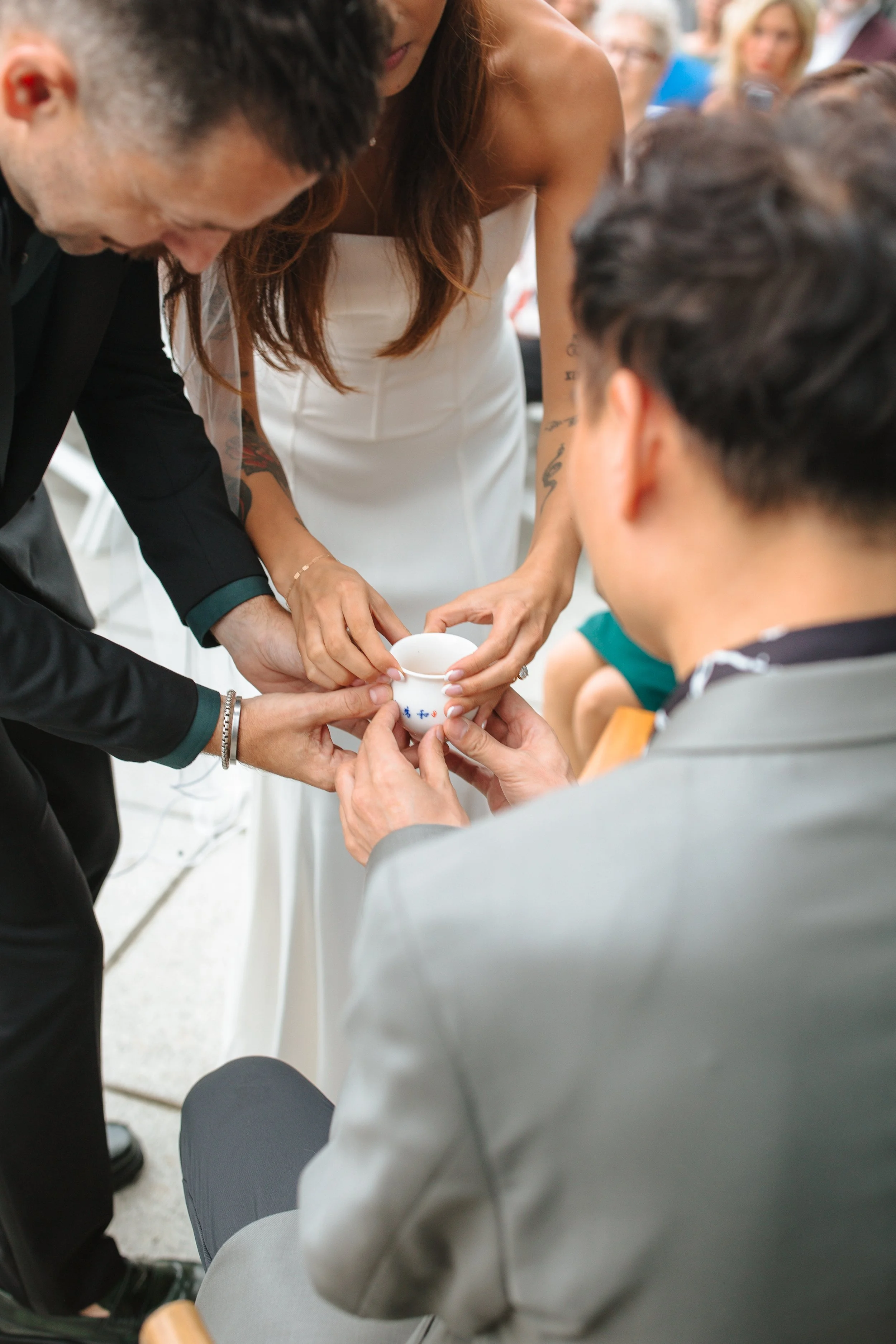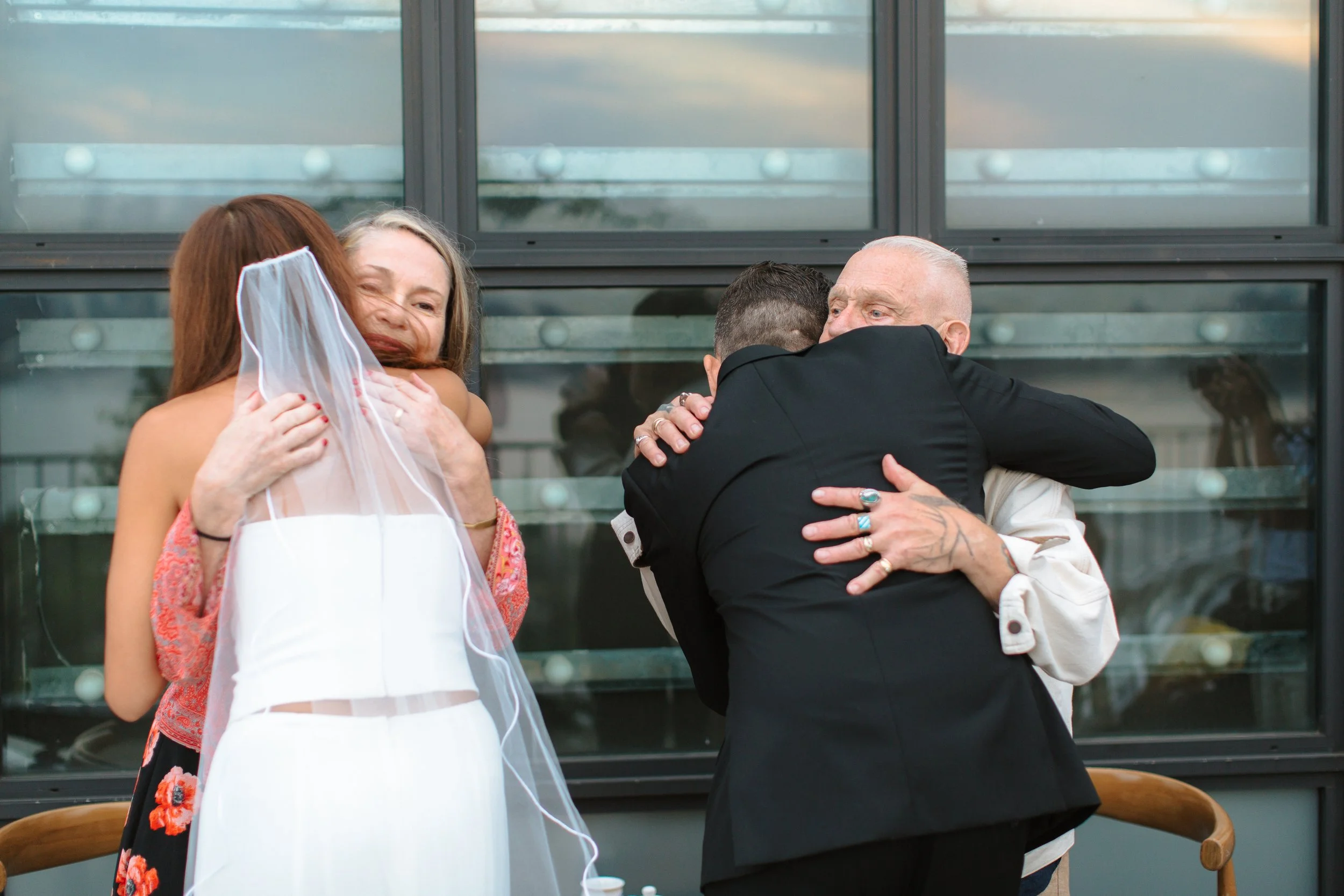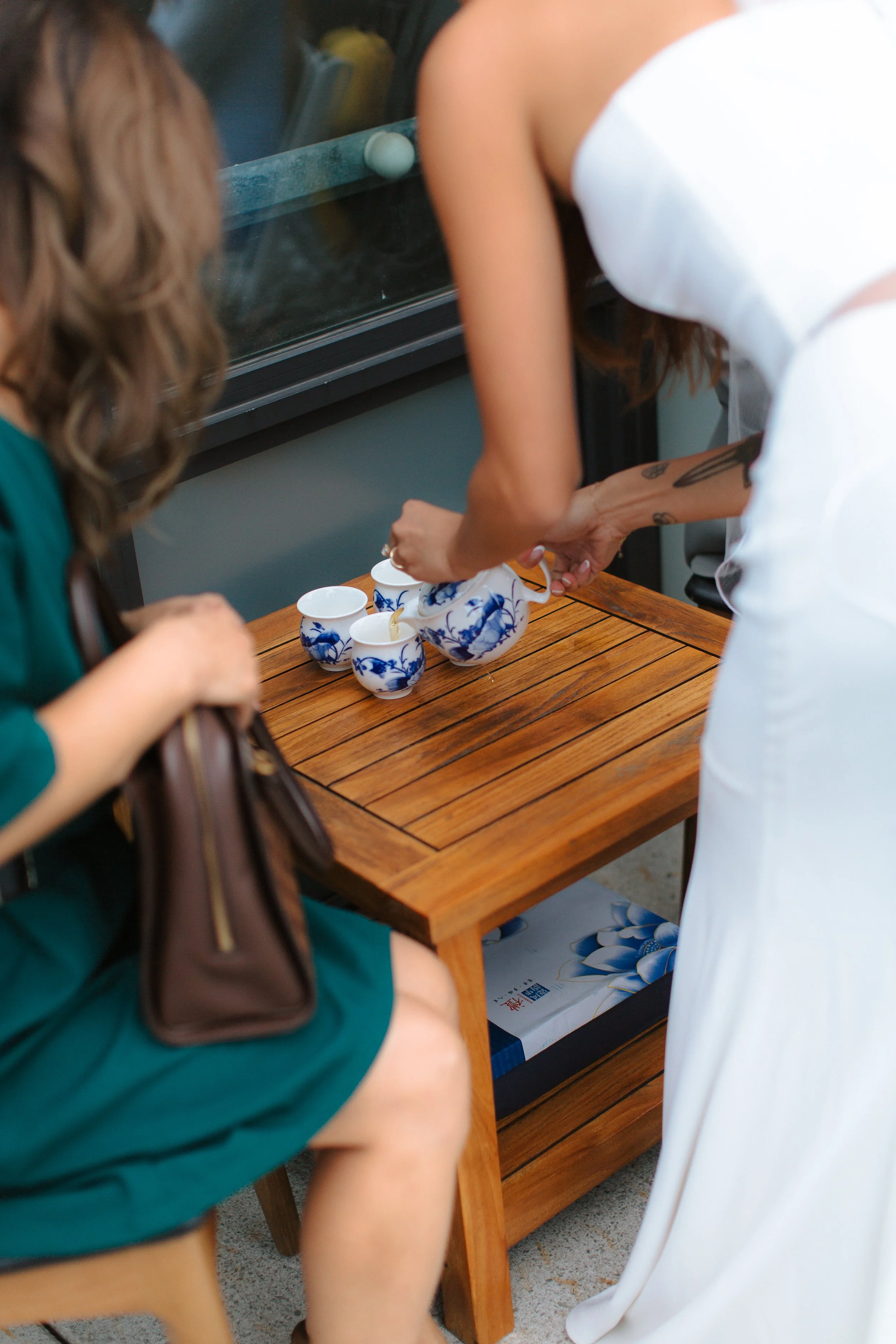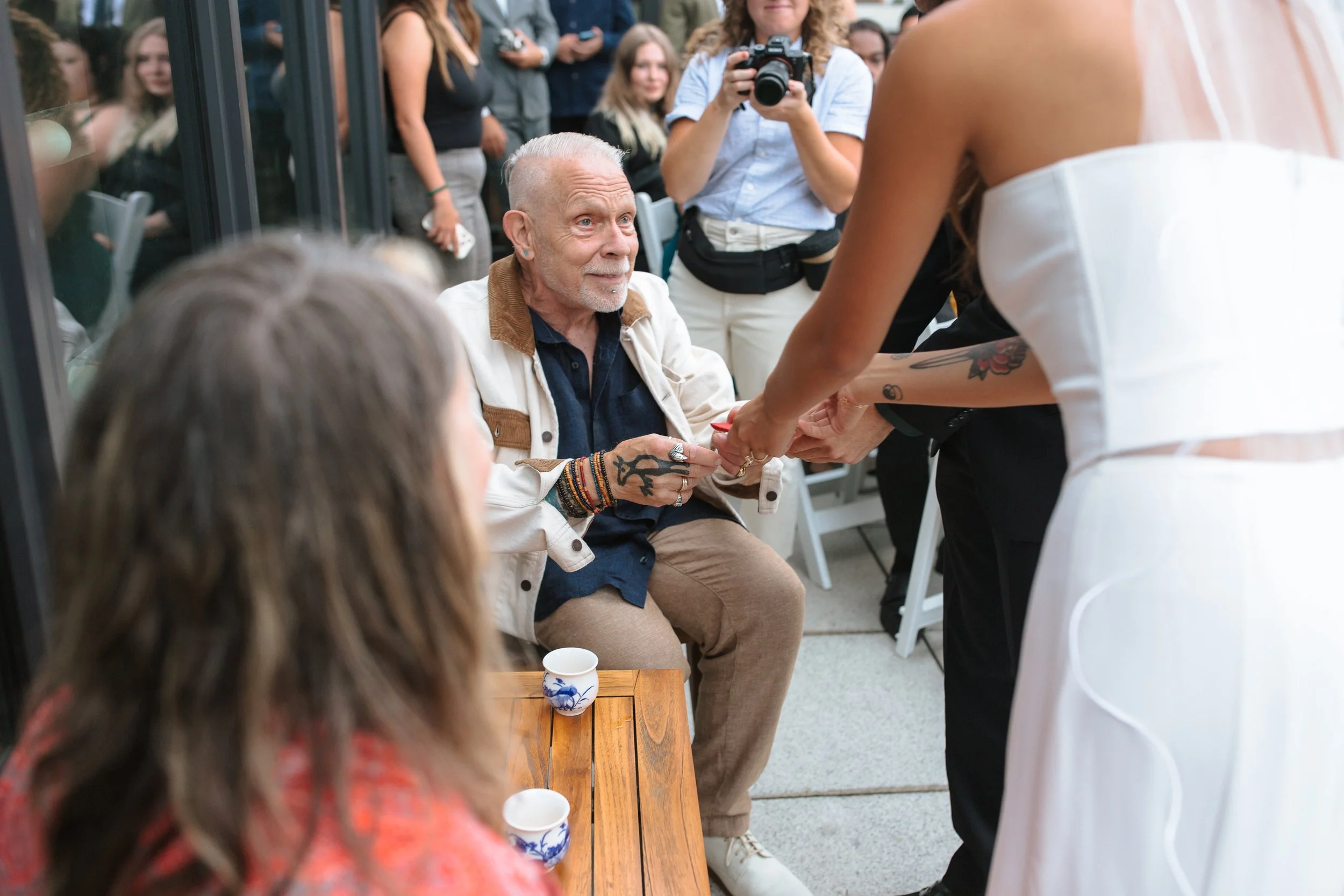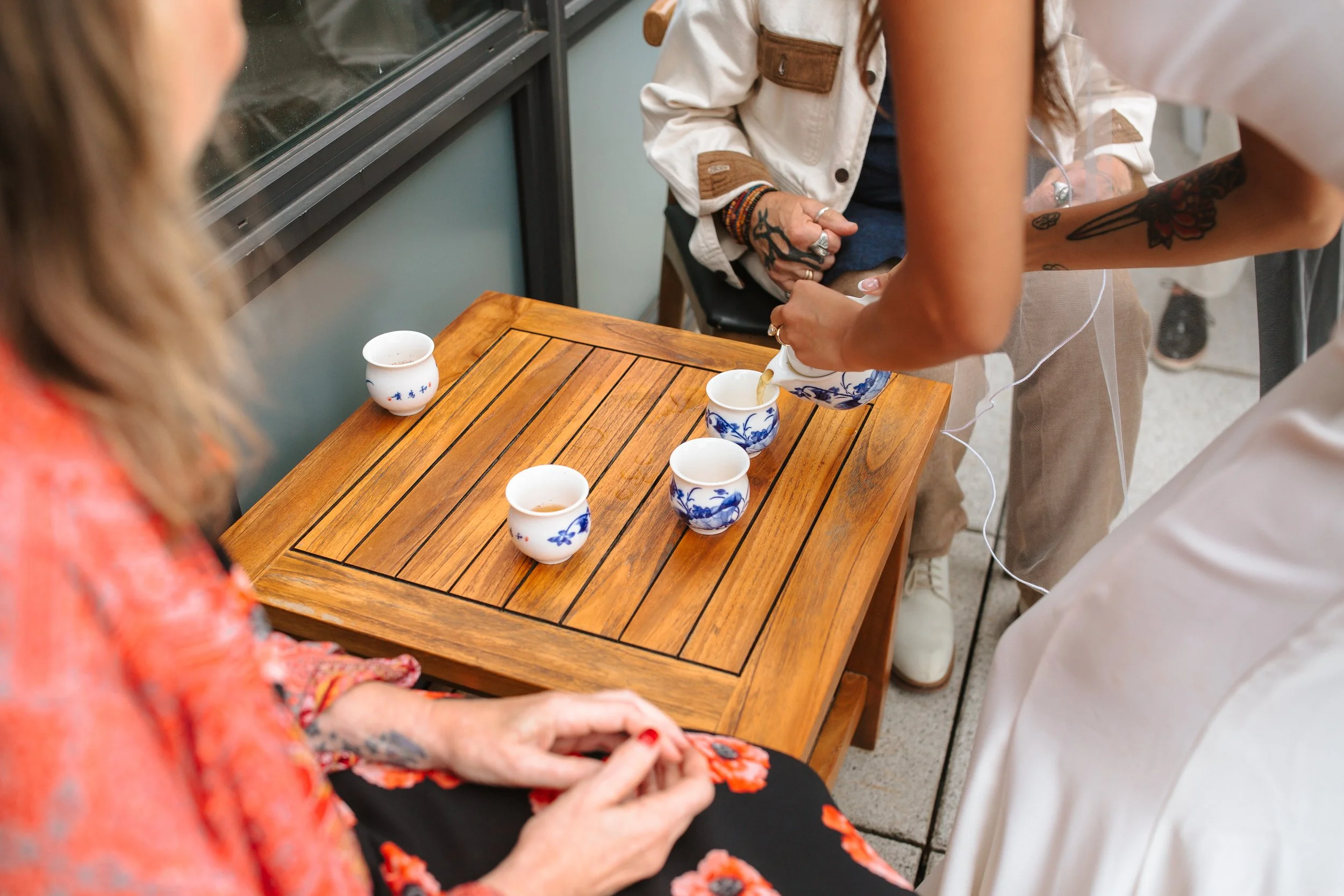Why I Love Cultural Weddings
As a photographer, it is my job to observe. To notice. To quietly document a story in all its intricate, moving parts. Weddings are already emotionally rich playground for any silent observer—but when you add in layers of cultural tradition and family dynamics, the challenge becomes even more meaningful.
I’ve been lucky to witness and document celebrations from around the world—South Asian Hindu and Muslim ceremonies, Ismaili weddings, Chinese tea rituals, Jewish and Ethiopian Orthodox traditions, and everything in between. This career has provided me quite the worldly education in compassion and human connection.
As someone who is multicultural myself, honoring tradition through art has always been deeply personal. My mother is French-American, and my father is Lebanese. I grew up between languages, landscapes, and values—developing a lifelong curiosity and reverence for the cultures that shape us. That early exposure instilled in me a respect for the sacred—especially when it comes to how different people mark the union of families.
Weddings are a mirror of a community’s priorities. They show us what a group of people holds dear—whether that’s ancestry, joy, faith, or hospitality. And yet, despite the beautiful variety, one thing always stands out: we’re really not so different. I’ve heard nearly identical blessings spoken in completely different languages, thousands of miles apart. At the heart of it all, we’re just people. And we want the best for those we love.
If I wrote about every specific tradition ive witness and learned about, I’d end up with a book, not a blog. But to name a few I particularly enjoy:
The Pithi / Haldi / Manjha / Haldaat Ceremony
This pre-wedding ritual is found in many Hindu, Muslim, and some Christian communities across South Asia. While the name varies—Pithi in Gujarati and Sindhi communities, Haldi in most Hindu traditions, Manjha among Muslims, and Haldaat in some North Indian Christian weddings—the essence is the same: a ceremonial purification and blessing of the bride and groom.
A turmeric-based paste (or sometimes coconut in South Indian Christian rituals) is applied to the couple’s skin to beautify, protect, and cleanse them before marriage. The ceremony is usually full of laughter as family and friends take turns applying the paste while offering their blessings. It’s one of my favorite traditions to photograph because of the unfiltered joy and intimacy it brings to the surface.
The Baraat
One of the most dynamic wedding processions you’ll ever see, the Baraat is traditionally how a South Asian groom arrives at his wedding—often on horseback or traditionally in india, on an elephant. However, modern grooms have reimagined the custom with everything from vintage convertibles to fire trucks.
What makes it stand out is the celebratory energy: drums, dancing, and sometimes full-on parades. It flips the Western narrative, where the bride is typically presented in a grand entrance. Here, the groom shines first, escorted by his family in a moment of sheer celebration. In traditional North Indian weddings, the groom’s procession often culminates in a ceremonial welcome by the bride’s family—marking the coming together of two lineages.
The Chuppah
In Jewish weddings, the ceremony takes place under a Chuppah—a canopy held up by four poles and open on all sides. It symbolizes the couple’s first shared home: open to community, grounded in tradition, and built together.
The chuppah is a visual metaphor that’s both poetic and powerful—it reminds everyone present that marriage isn’t just about two people, but about creating a space of belonging, hospitality, and a shared future.
Chinese Tea Ceremony
A central tradition in Chinese weddings, the tea ceremony is a moment of deep respect and gratitude. The couple kneels or bows as they serve tea to their elders—typically parents, grandparents, and other close family—symbolizing the joining of two families and the honoring of ancestry. In return, elders offer blessings, advice, and often red envelopes with gifts or money. The ritual is intimate and humbling, and often one of the most emotional moments of the celebration.
These are just a few of my favorite cultural wedding moments as there are too many to count let alone name in one blog.
Bearing witness to these traditions has been one of the greatest honors of my career. Every culture offers its own language of love. Its own rituals for blessing, celebrating, and bringing people together. And as I photograph these moments, I’m constantly reminded of how much more connects us than divides us.
Whether it's turmeric on the skin, coins exchanged in prayer, or symbolic structures built out of flowers to signify the making of a home, these moments carry the generations past, present and future.
It has been an honor and a privilege to learn about people through their celebrations and it is one thing that keeps me excited to continue learning and documenting weddings.























